Application modernization is critical to keep your business competitive, growing, and thriving, but it can also seem overwhelming. In this article, we’ll cover the top ten benefits of updating and upgrading your legacy apps, an example of how this works in practice, and a short guide to app modernization strategies, including the upsides of each.
When asked about their top app modernization priorities, CIOs outlined a sharp pivot toward structural upgrades and developer efficiency:
- 58.6% selected “Increasing automation in software development and operations” as their highest priority. The focus is on speed, scale, and stability.
- 50.7% rated “Enabling API-first development” highly, reflecting a desire for modularity,
reusability, and integration readiness. - 46.4% said “Refactoring monolithic apps to microservices” underscoring a shift to more
granular, scalable architectures. - 45.7% chose “Re-platforming legacy apps to cloud”, signaling continued migration
momentum. - 44.9% prioritized “Retiring or replacing obsolete apps.” Cleanup is as important as
Modernization.
In other words, the genie is out of the bottle, and the magic of digital transformation is undeniable. However, the process of legacy application modernization may seem daunting, thanks to various factors, from the cost to the impact on your company culture, the sheer volume of legacy and technology debt, and concerns about disruption to day-to-day operations.
While it might appear that you can’t afford to undertake significant digital transformation, you can’t afford not to prioritize application modernization.
“Information technology is at the core of how you do your business and how your business model itself evolves.”
— Satya Nadella, CEO, Microsoft
To help you better understand the power (and necessity!) of app modernization, we’ll start by looking at how we helped an international company evolve its antiquated system to become a state-of-the-art, competitive, tech-driven powerhouse with an IoT flagship product.
We’ll also take a closer look at all the benefits of app modernization — from those that are pretty obvious to some factors you might not have considered. And finally, we’ll discuss app modernization terms that you should know as you decide how to make the most of your legacy investments while evolving your business with leading-edge technology for improved performance, function, and results.
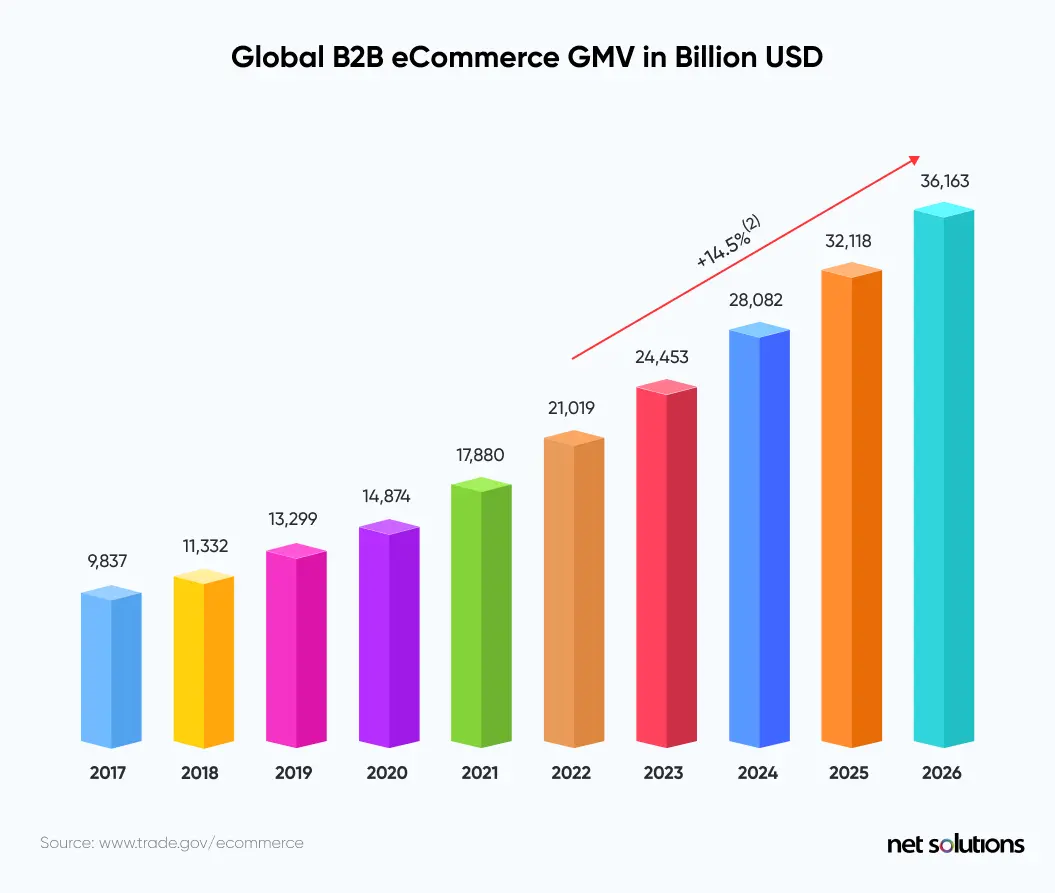
First, What is App Modernization?
Simply put, app modernization is updating, upgrading, replacing, and adding to your existing IT investments for critical growth that keeps your business responsive and competitive. In the process of evolving your legacy systems, improvements are made strategically so you can keep delivering value while responding to the ever-changing demands of your customer and benchmarks set by the general technology landscape. The goal is to support rapid innovation while decreasing risk by modernizing your business applications, infrastructure, and processes, regardless of if you work on-site or use a cloud-based system.
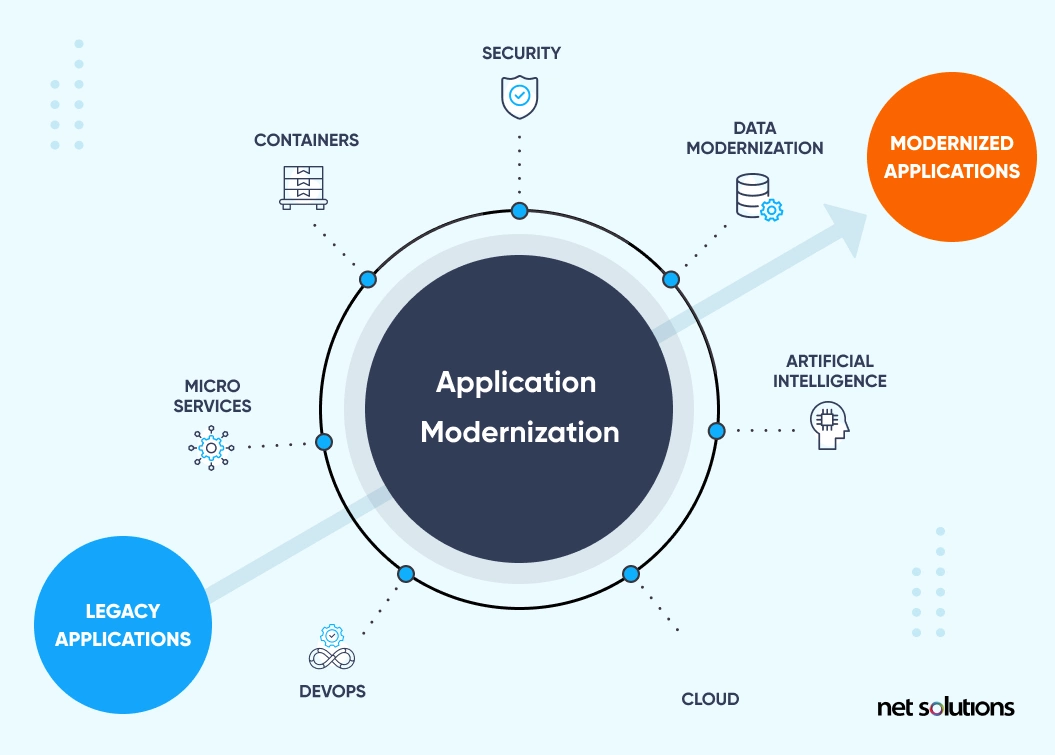
App Modernization: It’s All in the Plumbing
A great way of thinking about your IT situation is to think about house plumbing. When you first build your structure, everything is brand new, and the flow of information between your home base and the outside world is free and clear. But if you don’t continuously update and upgrade the system over time, things get rusty, outdated, blocked, and leaky. What was once an efficient backbone first becomes inefficient and, ultimately, a liability. One major rupture and the flow of your business interactions can quickly be washed out.
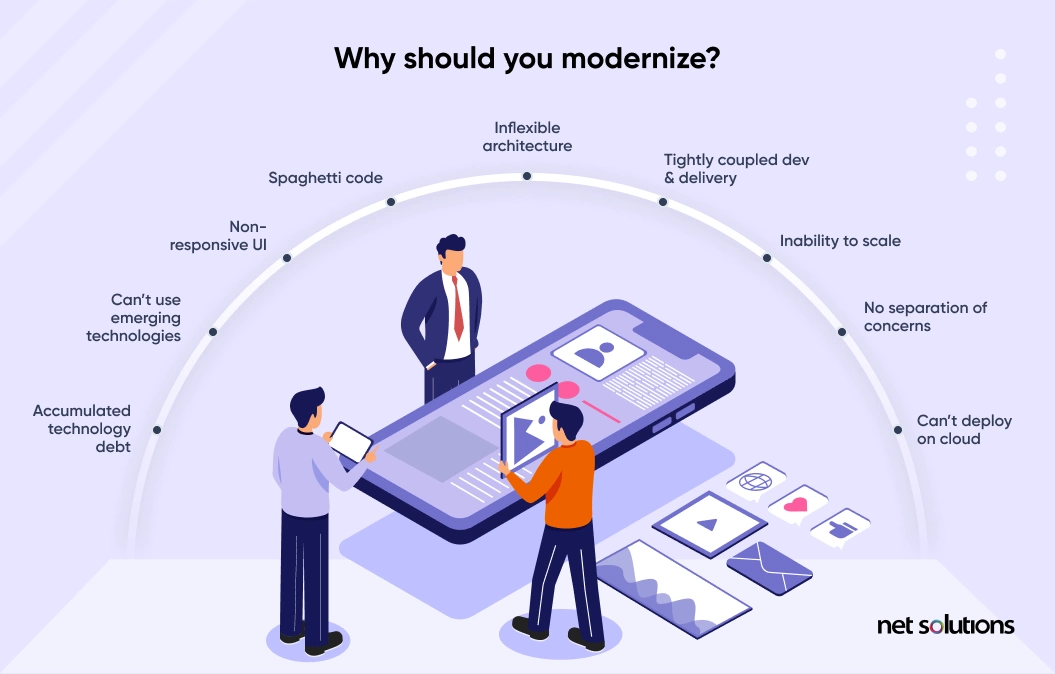
There’s a reason we’re using a plumbing metaphor, and that’s because one of our favorite case studies is GWA Group, a leading Australian kitchen and bath supplier. GWA’s story begins as most do: the popular Content Management System (CMS) they used to build several of their websites, Drupal, had become outdated. Finding developers who could work on and maintain their sites took a lot of work, and security patches had stopped being released. Worst of all, their old system was incompatible with a more modern Product Information Management (PIM) they needed to install to keep their business scaling, growing, and competitive.
So, the first step was to rebuild the sites with the updated version of Drupal. Once that was done, it was possible to modernize more of the tech stack, starting with the new PIM platform. This work cut to the heart of the app modernization strategy: the trick was to keep the 20(+)-year-old legacy system working smoothly for compliance reasons while migrating an enormous amount of data to the new platform and seamlessly integrating a new third-party B2B system. Using an AWS app modernization (Amazon Web Services) strategy, we maintained a fast, efficient experience for the GWA team that supported ongoing compliance. At the same time, we refreshed the internal PIM, updated the UX, and modernized the tech stack.
When I demonstrated the design prototype for the IoT platform, senior leaders were blown away. The designs are amazing and much better than any international design agency I had previously worked with. They demonstrated great design thinking, taste, and simplicity.

–Sandeep Babbar, Growth Platforms Manager at GWA
With the success of these projects, GWA has continued to work with us on other modernization projects, including an innovative system of in-store kiosks that read product tags, online virtual walkthroughs of the brand store, and B2B apps that helped expedite and simplify the sales process. And we helped their internal team create and deploy an IoT solution that became GWA’s flagship product.
App modernization projects vary in size and scope, and as you can see from GWA’s experience, there’s no reason to believe you have to do it all at once. The beauty of updating and modernizing legacy apps is that with the money you save by running more efficient systems, you have more to invest in innovation. This is what keeps your business competitive today — and tomorrow.
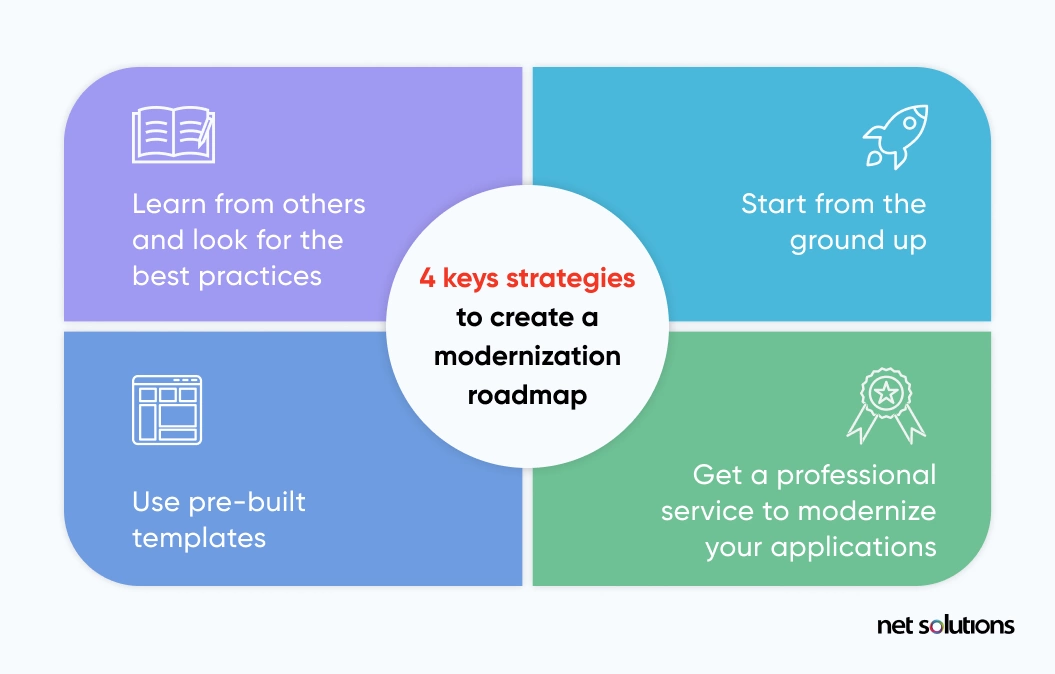
The Top 10 App Modernization Benefits
With an experienced application modernization service & strategy partner like Net Solutions, the journey from inefficiency to innovation is cost-effective and efficient.
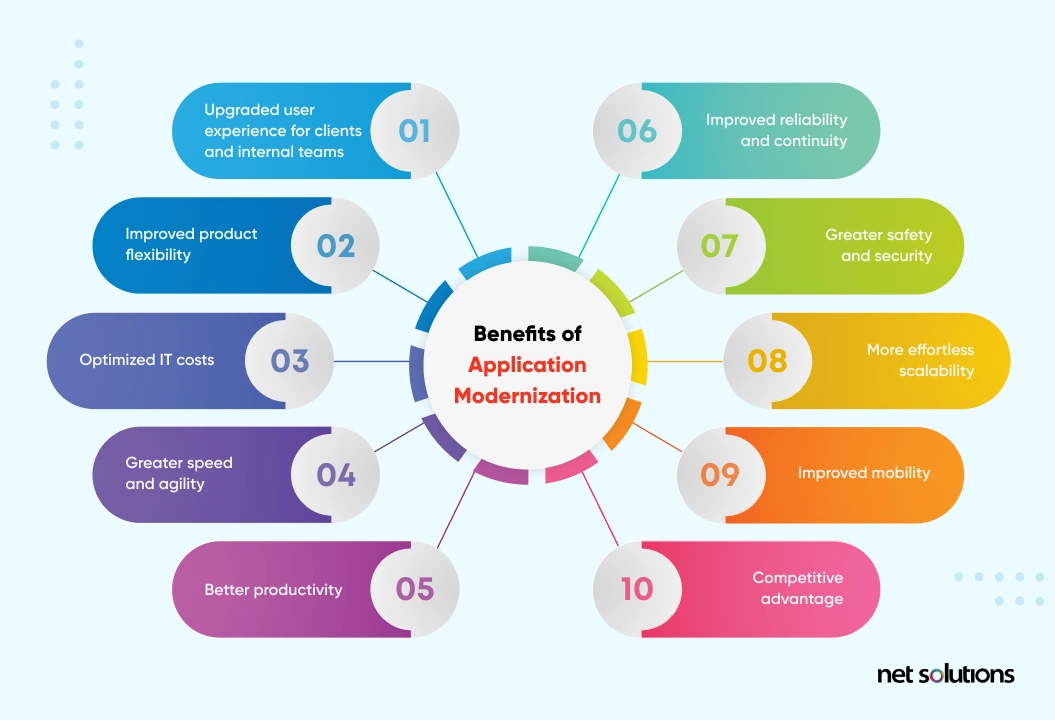
Here are the top 10 app modernization benefits to consider when setting your business priorities:
- Upgraded user experience for clients and internal teams: Cloud-based solutions provide better cross-platform performance, more intuitive use, info-rich dashboards, simplified interactions, smoother onboarding, and enhanced website security.
- Improved product flexibility: The switch from traditional software to a Software as a Service(SaaS) model or from an on-premise to a cloud-based system delivers a more personalized experience to your end users. And it gives your team greater flexibility to tailor features and functions to user needs and desires based on real-time analytics and feedback.
- Optimized IT costs: Cloud-based solutions empower you to quickly scale or contract according to market demand and traffic, maximizing efficiencies without impacting performance while minimizing IT infrastructure expenditures.
- Greater speed and agility: A modernized system can be updated and maintained more efficiently, with faster deployments and an expanded capacity to meet market demand seamlessly.
- Better productivity: A cloud-based system supports your team working across locations, time zones, and departments, enhancing connectivity, collaboration, innovation, and creativity.
- Improved reliability and continuity: Rebound faster from challenges and deliver a consistent User experience.
- Greater safety and security: When your software and systems are outdated, you stop getting security updates from the developer, and your business becomes much more vulnerable to hackers. If you think app modernization is pricey, try disaster recovery! Better to get your systems protected today with leading-edge SSL encryption and other Data security measures that minimize threats and optimize cybersecurity.
- More effortless scalability: Expanding and growing on demand is critical to meeting your customers where they are and what they need when they need it. Legacy systems are often cumbersome and challenging to scale, automatically inhibiting business growth and reducing revenue-boosting opportunities.
- Improved mobility: In the age of remote work and on-the-go customers, your mobile experience must be on point. For your team, this means being able to check inventory, facilitate sales, manage projects, and generally make data-driven decisions while on the road. Your customers must also enjoy a seamless experience at all touchpoints with all the features and functions they expect when buying from or interacting with your brand or business.
- Competitive advantage: For all of the reasons above, when you modernize your legacy systems and take advantage of the latest technology in app modernization, you improve your speed, agility, position in the market, security, and responsiveness — critical factors as new digital technologies, including AI, blockchain, and robotic process automation (RPA) are forever changing the business landscape across all industries and sectors.
Application Modernization Terms: Definitions & Benefits
When taking a deeper dive into all the aspects of evolving your legacy system, you’ll encounter the following application modernization tools, processes, and strategies. Here are a few basic definitions to help you better understand the opportunities available to your business:
Rehosting (“lift and shift”)
The first place we typically look at is where/how your technology is hosted. The process of moving applications from one environment to another without making any modifications — for example, from an on-premise host to the cloud or an older cloud environment to a newer one — is called rehosting. Benefits include less planning than other app modernization strategies, cost and time savings, and relatively low risk, thanks to the fact that there’s no need to modify the structures or processes of the application.
Replatforming
Like rehosting, replatforming is about app migration from an outdated platform (i.e., an on-premise system) to the cloud. Unlike rehosting, minor modifications are made to take advantage of the cloud environment and maximize benefits, including speed, efficiency, and a relatively modest cost vs. rearchitecting or refactoring.
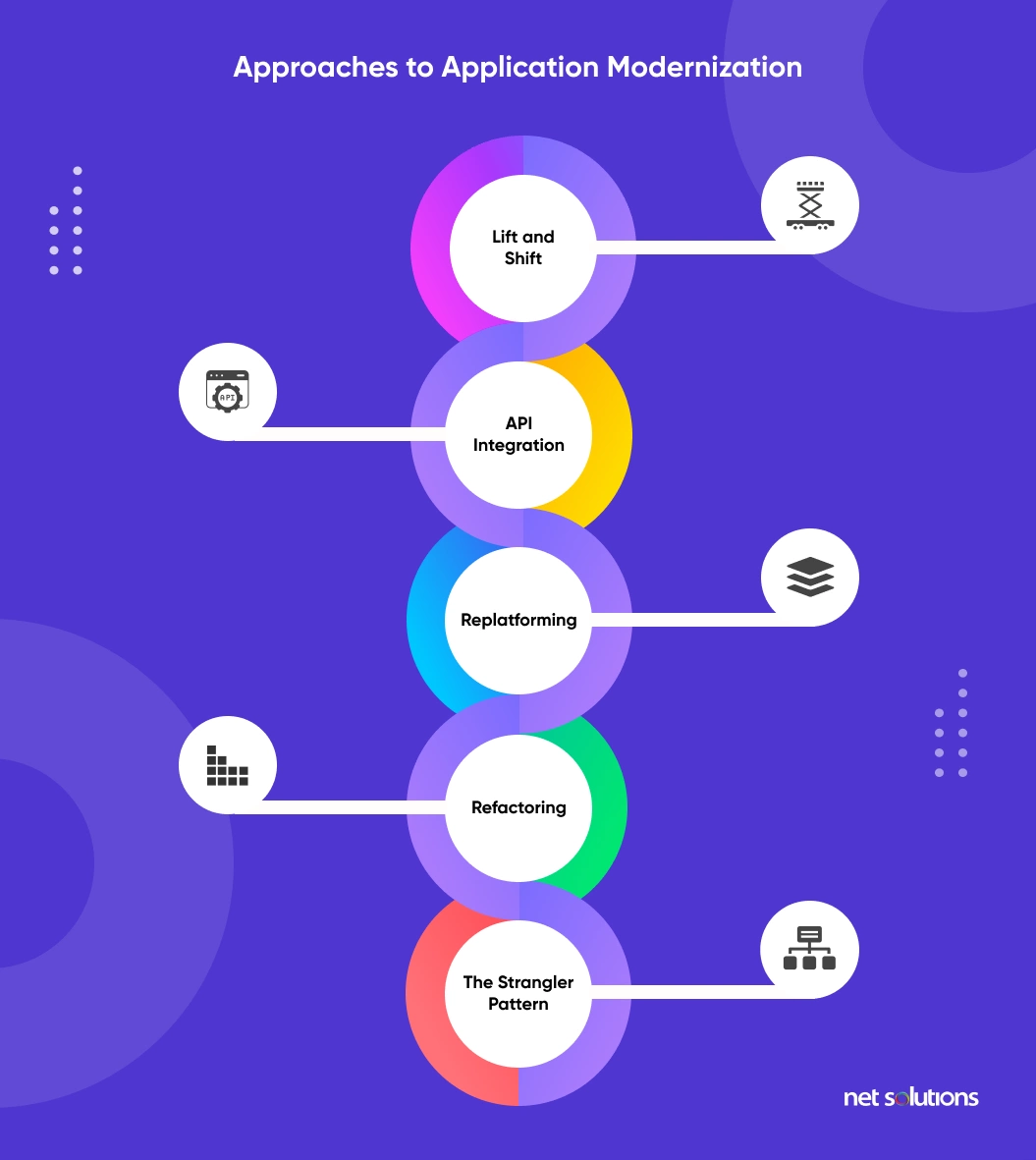
Rearchitecting or Refactoring
Just as it sounds, these approaches to application modernization entail the deconstruction of legacy systems and the implementation of state-of-the-art technology, processes, and approaches to rebuilding your IT, so it better supports your business objectives. There is a significant difference between rearchitecting and refactoring — refactoring is about redoing code to meet modern standards, but the external behavior remains consistent. Rearchitecting is about remodeling the app’s architecture and evolving external behavior, for example, increasing capabilities. The benefits of rearchitecting or refactoring include greater scalability, agility, resiliency, and security.
Application containerization
This aspect of application modernization can be used across various strategies — it’s a strategic use of techniques that separate apps or the elements of apps into their packages, aka containerization. The benefits of decreasing the number of necessary resources to run your apps include greater flexibility, smoother and faster deployment, and better scalability.
There is no one-size-fits-all approach to digital transformation — how you proceed with modernizing outdated legacy systems to optimize your processes and user experiences depends on numerous factors, from budget and timeline to business needs and objectives. But the bottom line is that all levels and types of application modernization benefit your business by saving you time, money, and resources while expanding opportunities to scale and grow your business with new revenue streams and performance-driven improvements and efficiencies.
Frequently Asked Questions
1.What should be included in the application modernization strategy?
While discussing application modernization solutions, organizations should typically focus on and include Cloud, Containers and Kubernetes, Microservices, Orchestration and Automation, DevOps, APIs, Increased security, and seamless data sharing between different systems & applications.
2.What is the most crucial aspect of starting with an application modernization solution?
The best way to start with an application modernization solution is to do an application assessment. Before you begin any transformation like this, you must inventory what you have. A list helps plot all these applications regarding their ease/difficulty and the post-modernization enhanced value.
3.What are some common examples of application modernization?
Common examples of application modernization began with leveraging microservices such that teams can deploy faster and achieve scale at lower costs. Further, Improved automation increases agility, and simplified toolchains improve visibility & efficiency. And reduced lifecycles help in a more effective release cadence.
4.What questions should an organization ask itself before application modernization?
Organizations should assess the potential loss if they don’t modernize legacy systems, what obstacles prevent modernization, have the teams completed cost-benefit analysis and health checks of the application, and how a team can be prepared for the transformation and future. Plus, it needs to be seen if POCs and reference architecture are available for effective modernization and if all streams of the organization (technical, business, financial) are aligned to the process.
SHARE THIS POST
Table of Contents
Related Resources
- A Framework-based Approach for App Assessment
- 11 Top Application Modernization Best Practices in 2025
- Building a Winning Application Modernization Business Case
- Legacy Application Modernization Case Studies & Success Stories
- Solving the Toughest Application Modernization Challenges
- Cloud-Native Application Modernization: Benefits & Strategies
- 8 Core Application Modernization Drivers
- Enterprise Application Modernization: Complete Guide [2025]
- Lift and Shift: The Modernization Formula for Legacy Apps
- Navigating Application Migration and Modernization [Guide]
- Application Modernization and Optimization: A Complete Guide
- A Practical Approach to Application Rationalization: A CIO's Guide to Managing Complexity and Reducing Costs
- What is Replatforming? A Beginner's Guide to Upgrading Your Technology Stack
- 7 Steps to Build an Effective Application Modernization Roadmap
- Application Modernization Services Market: Comprehensive Analysis
- A Step by Step Guide to Application Modernization Strategy
- Explore the Best Application Modernization Tools and Resources
- 13 App Modernization Trends That Can Support and Optimize Your App Modernization Strategy


